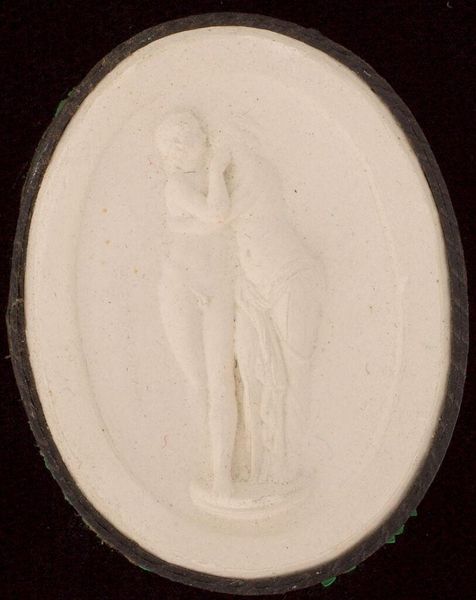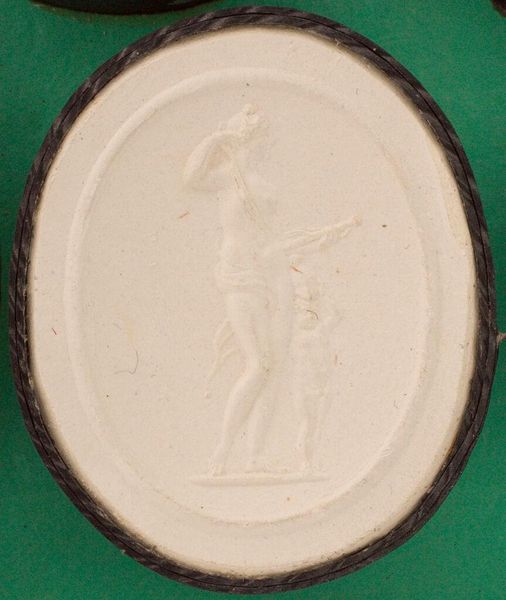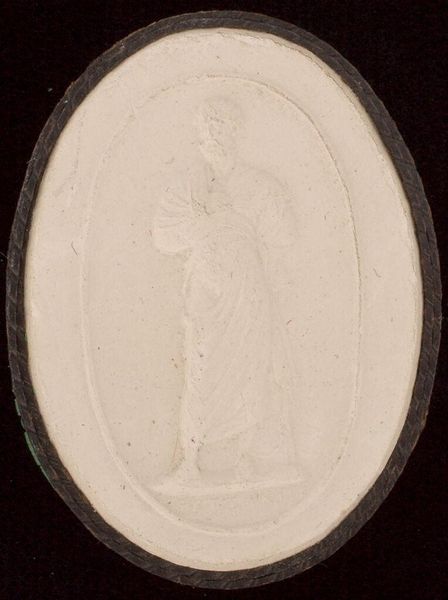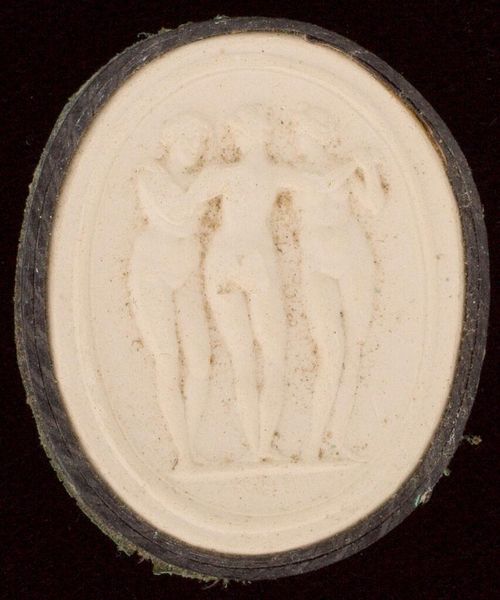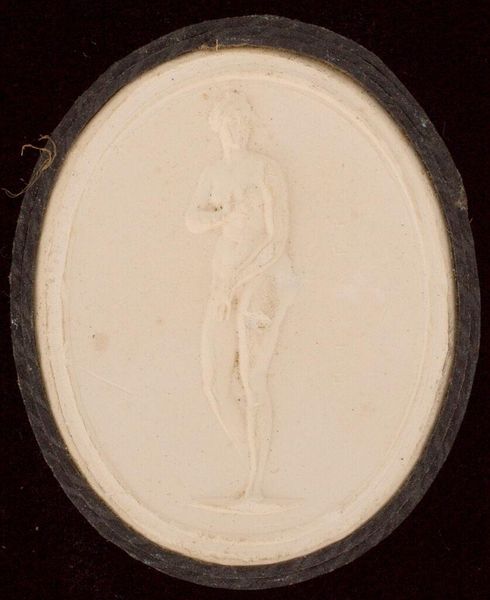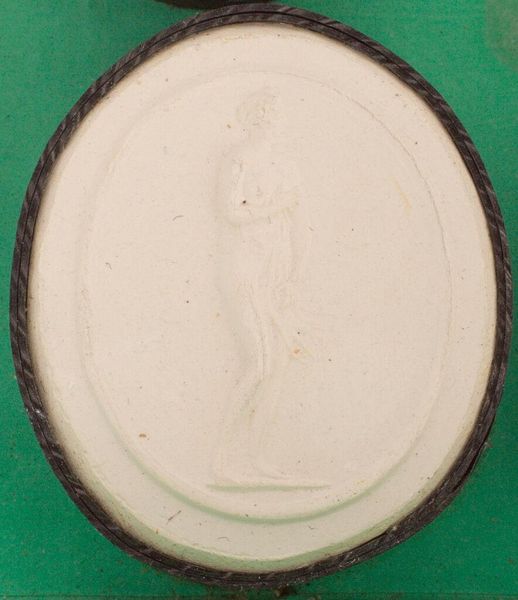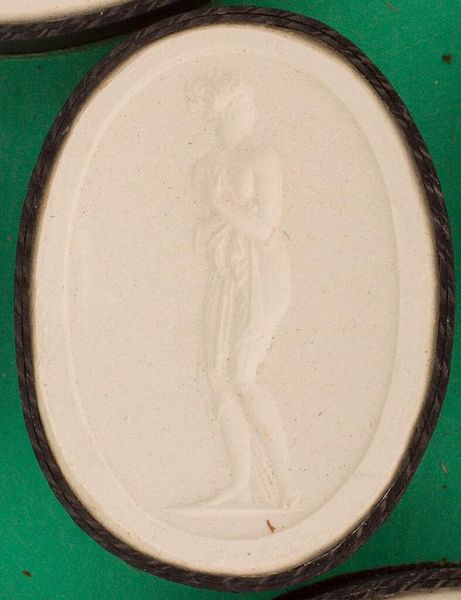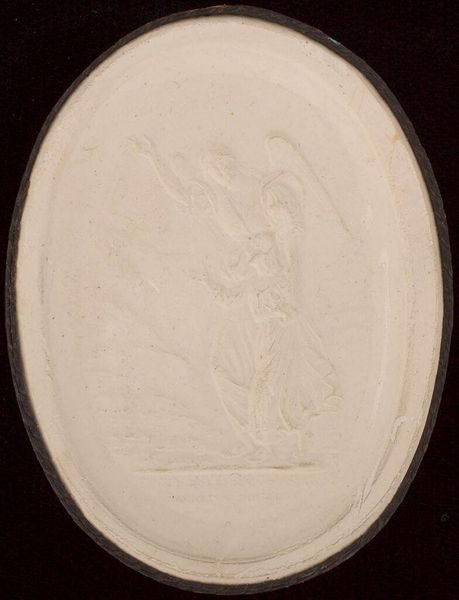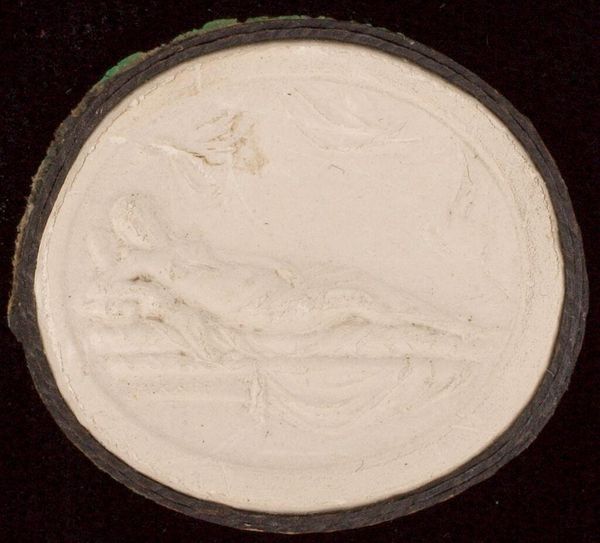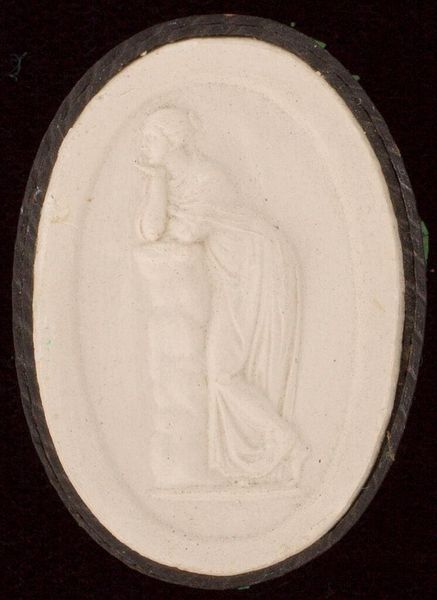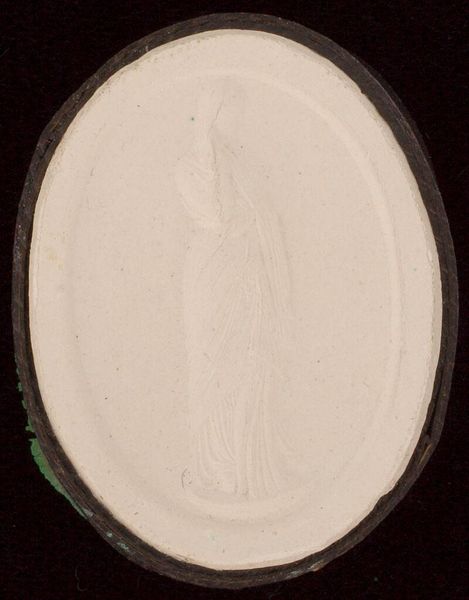
Dimensions: 2.2 x 2.2 x 1 cm (7/8 x 7/8 x 3/8 in.)
Copyright: CC0 1.0
Curator: Here we have a delicate intaglio, "Apollino, after Praxiteles," by the Pichler family. It's remarkably small. Editor: It feels like a whisper of a memory, doesn't it? Faint, yet resonant. Curator: Right. The Pichler family, known for their gem engraving, were essentially mass-producing classical imagery for consumption. These miniature sculptures acted like calling cards. Editor: Tiny deities for your pocket! I find the contrast so interesting—the grand aspirations of classical art, distilled into something so tactile and almost…folkloric. Curator: Exactly. It reveals the complex relationship between artistic production, social status, and even trade in the 18th and 19th centuries. Editor: It’s a reminder that even gods could be commodities. Now, looking at it, I wonder if the artist dreamt of marble while carving this miniature world. Curator: I am compelled by the skill required to render such detail in such a tiny space. Editor: It certainly gives a lot to consider.
Comments
No comments
Be the first to comment and join the conversation on the ultimate creative platform.
